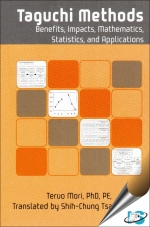Tab Article
Newly translated from the Japanese edition, this unique and practical book is unlike others in the area of robust design. The expert author describes how to conduct robust technology development in a time- and cost-efficient manner, as originated by Dr. Taguchi in the early 1990s, and includes all aspects for the development of robust technology and robust products: quality philosophy, quality strategies/planning, management and organization, robust design methods/tools, and real-life case studies from industry.
As a result, this book is written to teach engineers from various backgrounds the fundamentals of quality engineering such as: 2-step robust design, parameter design, tolerance design, quality loss function, S/N (signal-to-noise) ratios, orthogonal arrays, additive confirmation, and more. This book also provides engineering managers and executives with a practical blueprint for company-wide implementation of quality engineering. Numerous award-winning case studies are discussed to illustrate the uses and benefits of practical statistical analyses such as main-effect plots, and analysis of variance.


